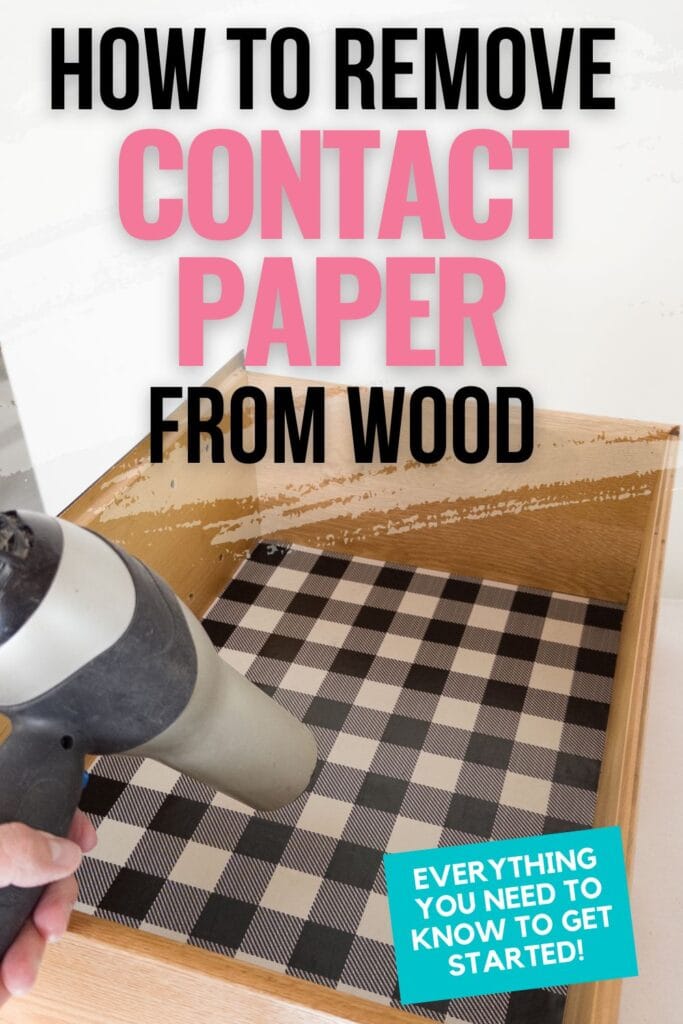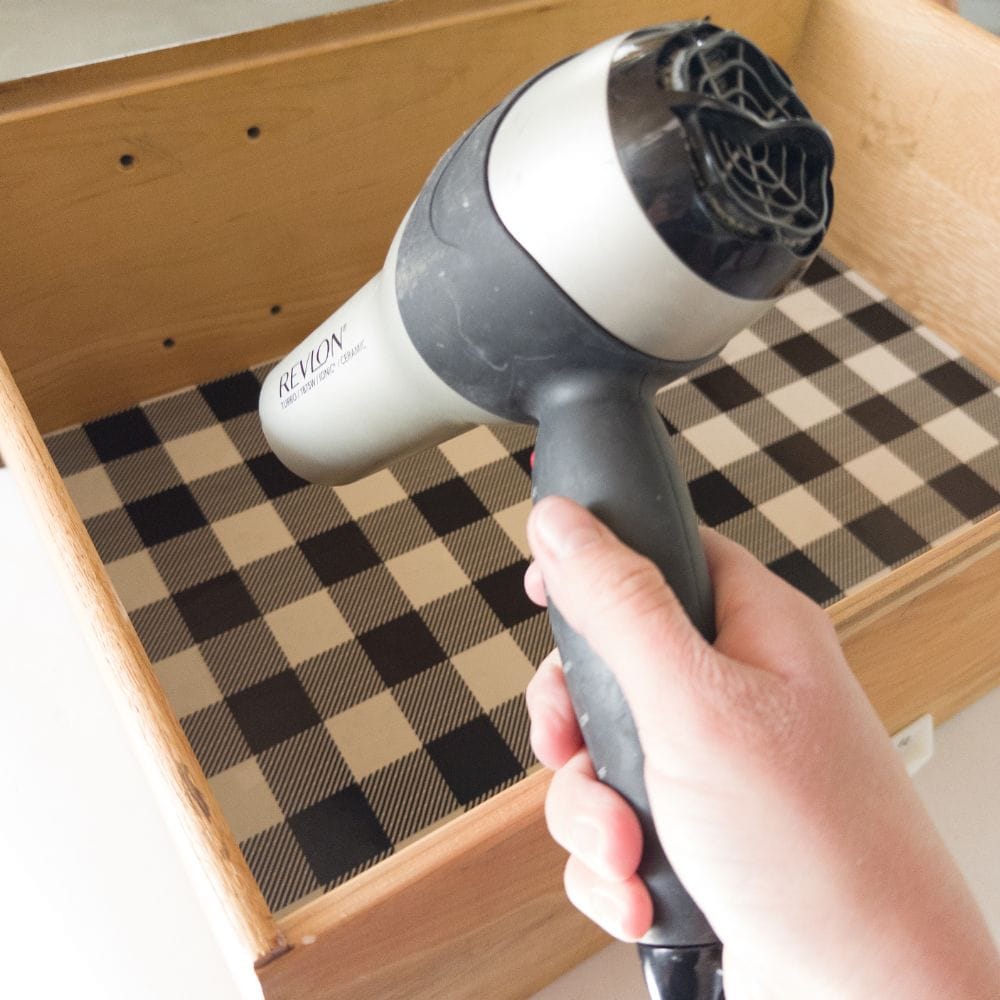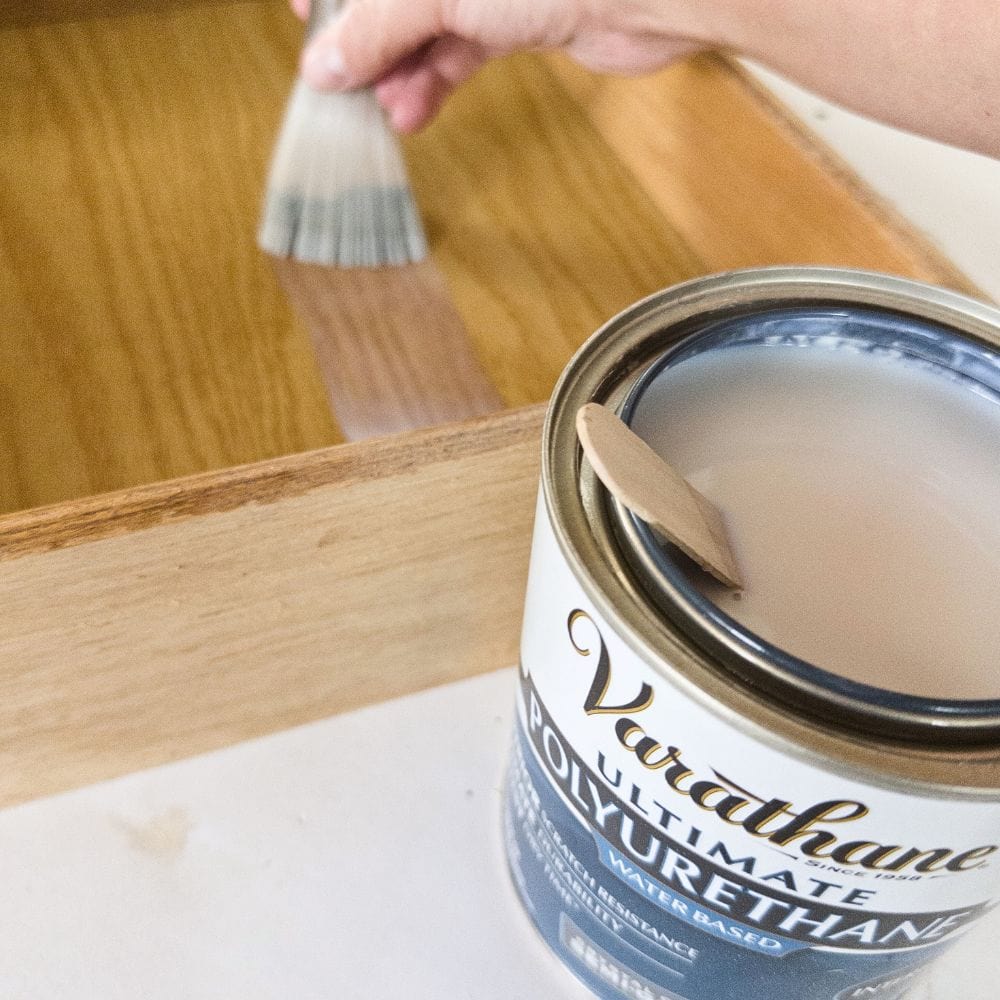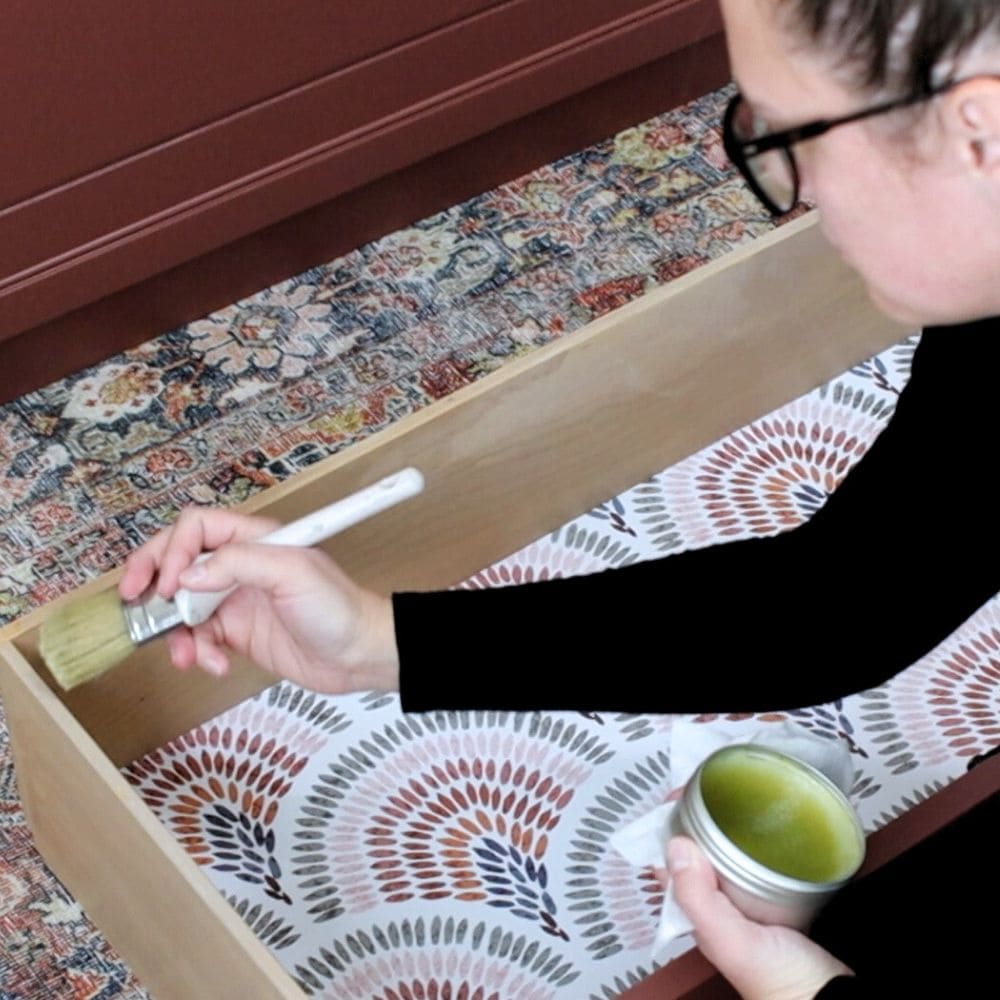How to Remove Contact Paper from Wood
Have you ever lined your dresser drawers with contact paper to give them a fresh and clean appearance? If so, you should also know how to remove contact paper from wood when it needs changing or updating. And while you’re at it, you should fix old dresser drawers that stick, so you’ll have both pretty and functional drawers!
Removing contact paper from wood is easier than you think. We’ll walk you through the simple steps of removing contact paper from wood as well as tips on maintaining your wood surfaces.

But first, let’s talk about why lining dresser drawers with contact paper is a popular choice among many. Contact paper not only adds a pop of color and pattern to your drawers, but it also keeps your wooden drawers safe from scratches and spills.
It’s a budget-friendly way to give furniture a fresh makeover while keeping it protected.
At some point, you may need to remove the contact paper and replace it with a new one. But contact paper doesn’t always come off easily, and it also has a knack for leaving behind stubborn sticky residue. If not removed properly, it can damage the wood surface.
If it’s been stuck to your drawers for a while, getting it off can be a real challenge unless you know these tricks.
As an Amazon Associate, I earn from qualifying purchases. I also may earn from other qualifying purchases with other companies or get free product to review and use. All opinions are my own.
The Most Effective Way to Remove Contact Paper
The most effective way to remove contact paper from wood is by using heat. Heat helps loosen the adhesive, making it easier to peel off the contact paper. You can use a hair dryer or any other heat source for this method.
First, make sure to position your hair dryer about 6 inches away from the contact paper. Set it to a hot or warm setting, but be careful to avoid any burns or accidents.

The goal here is to gently warm the contact paper and loosen the adhesive underneath, making it easier to remove from the wood surface.
Again, be careful while using heat to not burn yourself or damage the wood surface with excessive heat. You can start by testing a small area first before using it on the entire surface. If you notice any discoloration or damage, stop immediately.
Take your time and be gentle, as rushing may cause the contact paper to tear and leave behind more residue.
Another option is to use the sun’s heat if you live in a hot climate. Simply place the drawer in direct sunlight for a few hours, and the contact paper should peel off easily. This method is more time-consuming, but it’s a great way to multitask while enjoying some sunshine.
Remove the Sticky Residue
After removing the contact paper, there may be a sticky residue left behind on your wood surface. Using water-based polyurethane can help! Water-based polyurethane is a clear sealer that can effectively seal the sticky residue and prevent it from sticking again.
Before applying the polyurethane, make sure to thoroughly clean the surface with a damp rag to remove any dirt or grime so that it doesn’t get trapped under the sealant.
The polyurethane will create a protective barrier on your wood surface, preventing any damage from moisture or spills in the future.
Just apply a thin coat of polyurethane onto the sticky residue, making sure to cover it all by working in small sections. So it’s really important to clean the drawers beforehand to avoid sealing in any dirt or grime permanently.

Let the polyurethane dry completely before applying a second coat if needed. Once it’s dry, you’ll have a fresh piece of wood without any contact paper or sticky residue!
Additional Tips and Tricks on Removing Contact Paper from Wood
There are a few more helpful tips that can be effective in removing contact paper from wood. Patience and technique are key no matter which method you choose.
Using tools such as a plastic scraper or an old credit card can help lift the edges of the contact paper while applying heat. This can make the peeling process easier and faster.

But sometimes, even with heat and tools, there may be stubborn residues that won’t come off easily. In this case, you can try using products such as Goo Gone, vinegar, or oil to break down the adhesive. These products can get rid of sticky residue without damaging the wood surface.
Another tip is to use a combination of methods. For example, you can start with the heat method and then use vinegar or oil to remove any leftover residue. This can be a more effective approach for tough contact papers.
But if a different material was used to line the drawers, like fabric, here’s how to remove felt from wood drawers.
Lining Dresser Drawers Again
Now that you’ve successfully removed the contact paper and sticky residue from your dresser drawers, it’s time to line them again! But what material should you use this time? Check out our blog post on the best material to line dresser drawers for tips and recommendations.

By choosing the right lining material, you can get both functionality and style in your newly refreshed drawers!
Maintaining Your Wood Surfaces
After spending time and effort to remove contact paper from your wood surfaces, it’s important to take steps to maintain them to extend the life of your furniture and keep it looking new. Neglecting regular maintenance can lead to damage, discoloration, and other issues.
Regular dusting and wiping of wood surfaces is key to maintaining their beauty. Wiping down surfaces after use can help prevent build-up of grime and dirt. It’s important to use gentle cleaning products and avoid harsh chemicals that can damage the wood.
Avoid letting spills or water sit on the surface to prevent moisture damage. If water does come into contact with the wood, make sure to wipe it up immediately.
It’s also a good idea to apply furniture salve or wax every few months. This simple yet effective trick helps protect against moisture and dirt, as well as adds a beautiful shine to your wood surfaces.

Removing contact paper from wooden surfaces requires some patience and technique. The trick is to apply heat to loosen the adhesive and gently peel off the paper. Just be careful not to damage the wood or burn yourself.
Once it’s off, give the surface a good clean and seal it with water-based polyurethane to prevent any stickiness.
Once you’re done, you’ll have nice and tidy drawers, completely residue-free and without any contact paper! Just remember to regularly take care of your wooden surfaces to keep them beautiful and protected.
More Dresser Drawer Repair Tips
- How To Fix A Dresser Drawer Side
- Dresser Drawer Bottom Replacement
- Old Dresser Drawers Won’t Slide
- How to Fix Sagging Dresser Drawers
- How to Fix Dresser Drawers Bottom
Follow us on YouTube to get more tips for painting furniture.
Or share your project with us on our Facebook Group and be part of our community. See you there!
